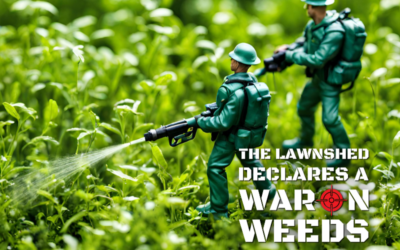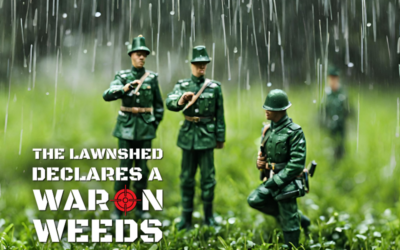In the realm of lawn and garden care weather emerges as a critical factor, influencing the growth patterns of our lawn and sadly the proliferation of weed species. By delving into the relationship between weather conditions and weed growth, we gain valuable insights into how environmental factors shape the dynamics of weed infestations. In this we navigate through the complexities of drought, excessive rainfall, cooler temperatures, and hotter temperatures, unveiling their distinct roles in fostering the growth of the ten “most wanted” weed weed species.
Weather’s Influence on Weed Growth:
Drought Conditions:
As the arid embrace of drought tightens its grip, select weeds reveal their resilience, adapting to thrive in water-deprived environments. Among them, bindii, crabgrass, purslane, and pigweed stand as exemplars of botanical tenacity, equipped with deep-rooted systems and water-conserving mechanisms. In the face of adversity, they seize the opportunity presented by drought, expanding their dominion amidst the parched earth.
Excessive Rainfall:
Conversely, when the heavens open and rain cascades down in torrents, a different cohort of weeds emerges as beneficiaries of nature’s bounty. Nutgrass, chickweed, paspalum aand wintergrass luxuriate in the abundance of moisture, their growth spurred by the deluge. With each drop of rain, they spread their verdant canopy across fields and gardens, thriving in the wake of heavy rainfall.
Cooler Temperatures:
As temperatures plummet and frost blankets the land in its icy embrace, a subtle shift occurs in the hierarchy of weed proliferation. Dandelions, clover, and henbit emerge as stalwarts of cooler climates, their growth tempered but persistent. Undeterred by the chill of winter, they persist in dotting landscapes with splashes of green amidst frosty lawns.
Hotter Temperatures:
When the sun reigns supreme and heat waves ripple through the air, a different cadre of weeds rises to prominence. Nutsedge, bindii, and kudzu flourish under the scorching sun, their growth fueled by the warmth. With each degree rise in temperature, they assert their dominance, spreading across landscapes with unwavering vigour.
The Ten Most Common Weeds and Their Weather Affinities:
- Dandelion (Taraxacum officinale): A testament to adaptability, thriving in cooler temperatures while enduring moderate drought.
- Summer grass (Digitaria spp.): Flourishing in warm, dry climates, asserting its presence in lawns and disturbed soils.
- Chickweed (Stellaria media): A harbinger of cool, moist environments, spreading rapidly after rainfall events.
- Bindweed (Convolvulus arvensis): Mastering the art of moisture, conquering lawns and gardens with its vigorous growth.
- Purslane (Portulaca oleracea): Resilient to drought, basking in the sun and spreading its succulent leaves across arid landscapes.
- Clover (Trifolium spp.): Preferring cooler temperatures and nitrogen-rich soils, adorning landscapes with its vibrant foliage.
- Pigweed (Amaranthus spp.): Tolerating drought and thriving in diverse soil types, asserting its presence in disturbed areas.
- Wintergrass (Poa annua): Preferring cooler temperatures and thriving in moist environments, it proliferates in lawns and gardens during the winter months.
- Nutsedge (Cyperus esculentus): Thriving in warm, wet conditions, posing a formidable challenge to control.
- Bindii (Soliva sessilis): Flourishing under the hot sun, spreading its prickly seeds across lawns and fields with tenacity.
In the war on weeds, weather conditions serve as master weavers, shaping the destiny of botanical adversaries. By unravelling the subtle nuances of weather patterns and their influence on weed growth, lawn lovers arm themselves with invaluable knowledge, enabling them to navigate the ever-changing landscape of weed management with insight and efficacy.




